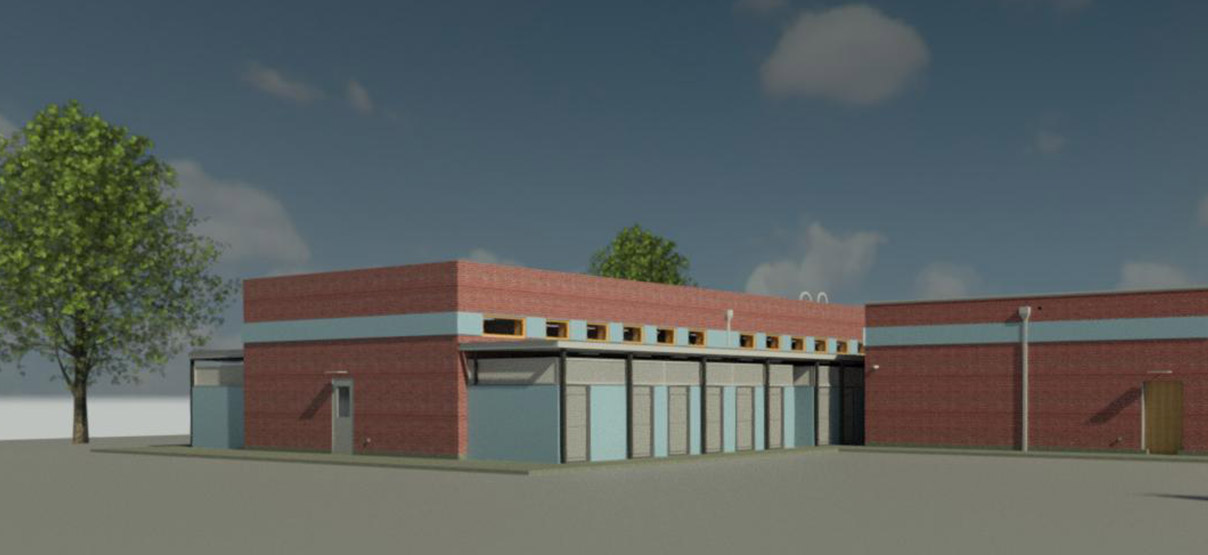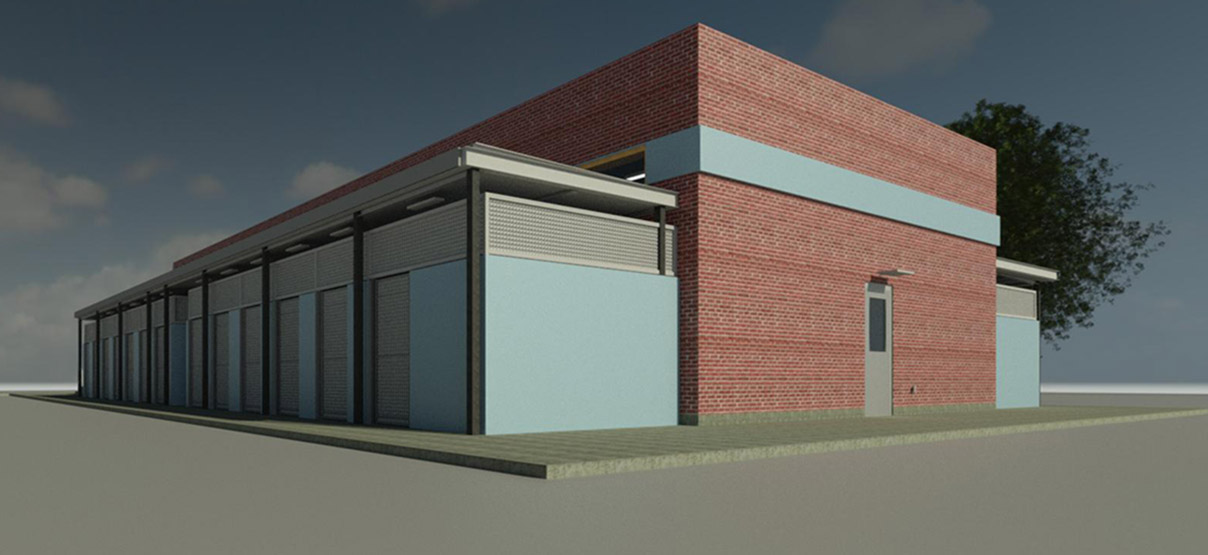As a result of the Elgin O’Hare Western Access project, the Chicago Police Department K-9 training facility was relocated to an approximately six-acre site located in unincorporated Cook County on O’Hare International Airport’s property. Primera worked with the Chicago Department of Aviation (CDA), the Illinois State Toll Highway Authority, Cook County, the City of Des Plaines, the Metropolitan Water Reclamation District of Greater Chicago (MWRD), and other assisting agencies to provide full-service design for the new, 10,000-square-foot facility, which includes office space, storage areas, a classroom, six detection rooms for specialized training, 26 kennels with interior and exterior access, a veterinarian exam room, and dog wash area. The building is used by the Chicago Police Department as well as other jurisdictions to provide specialized training for canine units throughout the State.
Primera provided full-service engineering and design for the project site and facility. Site civil scope of work included roadway design, site geometry, grading, utility design, stormwater management, and underground detention design.
Primera designed volume control and detention facilities per the MWRD Watershed Management Ordinance requirements and overcame numerous site constraint challenges including existing utilities, railroad tracks, adjacent easement, and existing roadways undergoing reconfiguration as part of other contracts. Our scope of work for the facility included mechanical, electrical, plumbing, lighting, fire protection, structural, architectural, and energy services according to the Sustainability Airport Manual and in compliance with CDA standards and the 2018 International Energy Conservation Code requirements. These requirements involved water reduction, enhanced lighting controls, daylighting, enhanced building envelope, and energy efficient mechanical systems. Based on the completed energy model, all incorporated design elements show a 30 percent savings on energy consumption from the baseline requirements.





























 Primera Wins First Project in Texas
Primera Wins First Project in Texas 

